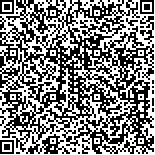本文已被:浏览 673次 下载 37次
投稿时间:2024-03-29 网络发布日期:2025-04-20
投稿时间:2024-03-29 网络发布日期:2025-04-20
中文摘要: 目的 比较随机森林与决策树模型在糖尿病足患者预后不良风险预测中的效能,为糖尿病足患者预后评估选择最优的风险预测模型。方法 回顾性分析2021年1月至2024年1月安徽医科大学附属安庆第一人民医院治疗的70例糖尿病足患者的病历资料,根据其预后情况分为预后良好组(n =48)与预后不良组(n =22)。比较两组相关资料,筛选糖尿病足患者预后的影响因素。依照7∶3的比例将患者分为训练集与测试集,分别用于构建随机森林与决策树模型,验证模型的预测效能。结果 预后不良组糖尿病病程≥10年、Wagner分级3~4级、C反应蛋白(CRP)≥20 mg/L、降钙素原(PCT)≥0.5 ng/mL、白细胞介素-6(IL-6)≥30 mg/L占比均显著高于预后良好组(P<0.05)。随机森林模型与决策树模型预测测试集糖尿病足患者预后不良的曲线下面积(AUC)分别为0.918(95%CI:0.880~0.962)、0.801(95%CI:0.716~0.852),灵敏度分别为94.78%、82.65%,特异度分别为80.11%、75.14%,正确率分别为96.06%、80.02%,召回率分别为93.11%、73.37%,精确率分别为94.12%、85.54%。Delong检验结果显示,随机森林模型预测测试集糖尿病足患者预后不良的AUC大于决策树模型(D=-3.648, P=0.012)。结论 随机森林模型与决策树模型在糖尿病足患者预后不良的风险预测中均具有较好的预测效能,其中随机森林模型的预测能力明显优于决策树模型。
Abstract:Objective To analyze the performance of random forest and decision tree models in predicting the risk of poor prognosis in diabetic foot patients, and to select the optimal risk prediction model for prognosis assessment in diabetic foot patients. Methods The medical records of 70 patients with diabetic foot admitted to Anqing First People's Hospital of Anhui Medical University from January 2021 to January 2024 were retrospectively analyzed, and the patients were divided into good prognosis group (n =48) and poor prognosis group (n =22) according to their prognosis. The data of the two groups were compared to screen the factors influencing the prognosis of diabetic foot patients. According to the ratio of 7∶3, the patients were divided into the training set and the test set, which were used to construct the random forest model and the decision tree model respectively, and the prediction performance of the models was verified. Results The duration of diabetes≥10 years, Wagner grade 3 to 4, C-reactive protein (CRP)≥20 mg/L, procalcitonin (PCT)≥0.5 ng/mL, and interleukin-6 (IL-6)≥30 mg/L in the poor prognosis group were significantly higher than those in the good prognosis group (P<0.05). The area under the ROC curve (AUC) of random forest model and decision tree model to predict poor prognosis of diabetic foot patients in the test set were 0.918 (95%CI: 0.880-0.962) and 0.801 (95%CI: 0.716-0.852), the sensitivity was 94.78%, 82.65%, the specificity was 80.11%, 75.14%, the accuracy rate was 96.06%, 80.02%, the recall rate was 93.11%, 73.37%, the precision rate was 94.12%, 85.54%, respectively. Delong test results showed that the AUC of random forest model for predicting poor prognosis of diabetic foot patients was significantly greater than that of decision tree model in the test set (D=-3.648, P=0.012). Conclusion Both random forest model and decision tree model have good predictive performance in predicting the risk of poor prognosis in diabetic foot patients, and random forest model is significantly better than decision tree model in predicting poor prognosis in diabetic foot patients.
keywords: Random forest model Decision tree model Diabetic foot Diabetes mellitus Complication Prognosis Wagner grade
文章编号: 中图分类号:R587.1 文献标志码:A
基金项目:安庆市医疗卫生类科技计划项目(2023Z2016)
附件
| Author Name | Affiliation |
| PENG Ying, ZHENG Hailan, QI Mingxia, JIANG Lan | Department of Endocrinology, Anqing First People's Hospital of Anhui Medical University, Anqing, Anhui 246001, China |
引用文本:
彭英, 郑海兰, 祁明霞, 江斓.随机森林和决策树模型在糖尿病足患者预后不良风险预测中的效能比较[J].中国临床研究,2025,38(4):524-528.
彭英, 郑海兰, 祁明霞, 江斓.随机森林和决策树模型在糖尿病足患者预后不良风险预测中的效能比较[J].中国临床研究,2025,38(4):524-528.
